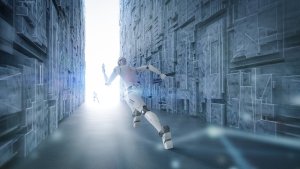We need a dual approach to AI: steer technology in the short term while building new systems for the long term.
Rapid progress in new technologies such as AI has led to widespread anxiety about adverse labor market impacts. This paper asks how to guide innovative efforts so as to increase labor demand and create better-paying jobs while also evaluating the limitations of such an approach. We develop a theoretical framework to identify the properties that make an innovation desirable from the perspective of workers, including its technological complementarity to labor, the factor share of labor in producing the goods involved, and the relative income of the affected workers. Applications include robot taxation, factor-augmenting progress, and task automation. We find that steering technology becomes more desirable the less efficient social safety nets are. If technological progress devalues labor, the desirability of steering is at first increased, but beyond a critical threshold, it becomes less effective, and policy should shift toward greater redistribution. If labor’s economic value diminishes in the future, progress should increasingly focus on enhancing human well-being rather than labor productivity.




